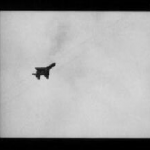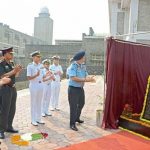INDIAN ARMY AT GALLIPOLI 1915
The stellar role the Indian Army played in many a campaign of the First World War is only gradually gaining recognition now, a century after the war. Perhaps the least known contribution is that of its contingent in Gallipoli, may be because it wasn’t too large in numbers or may be because it wasn’t a victorious campaign but the most humiliating defeat the Allied suffered in the war; though Australia and New Zealand commemorates the sacrifice of their countrymen who fought and died there by treating Anzac Day (25th April, the day of the first Allied landings at Gallipoli, ANZAC being the acronym for Australian and New Zealand Army Corps that fought in the campaign) as their national remembrance day. The Indian Expeditionary Force that fought in the Dardanelles had merely 15000 men in its ranks in a campaign that saw nearly half a million Allied troops take the field by the time it ended. Yet those hardy 15000 made a difference often impacting the operations decisively. No narrative of the campaign would be complete without portraying the outstanding grit of 14th Sikhs in the Third Battle of Krithia and that of 1/6th Gurkhas in the decisive battle of Sari Bair.
Representing the Indian Army at Gallipoli were the 29th Indian Infantry Brigade, the 7th Mountain Artillery Brigade, the Indian Mule Corps and a Medical Establishment. The infantry was deployed in the Helles area from 1st May to 10th July and was moved to Anzac after a brief interlude of rest and reorganization at Imbros, just in time to join the August offensive. The artillery landed with the ANZAC and went through every bit of turmoil that corps did from the day of the first landings on 25th April till the final evacuation in December. The 7th Mountain Artillery Brigade which arrived in Gallipoli from Egypt had two batteries, the 21st Kohat and 26th Jacob’s manned by Sikh and Punjabi-Mussalman gunners, the latter being the only Allied Muslim troops against the Turks in the peninsula.
The Indian batteries formed an integral part of the ANZAC and were in action throughout the campaign without a day’s relief. 26th Jacob’s prided itself as the artillery unit first in at Gallipoli and the last out. This unit earned laurels for the tremendous fire support it gave to the Australians at a critical juncture, relieving pressure on their infantry by drawing fire up on itself. During the August offensive on the Sari Bair Ridge the two Indian batteries formed part of the assaulting columns in close support of the infantry. Their contribution was so outstanding that they were long-remembered affectionately by their ANZAC comrades.
The whole Gallipoli expedition was largely dependent on animal transport because the peninsula had no proper roads which could carry mechanized transport. Therefore the Indian Mule Transport Train which arrived from France on the very first day of the operations played a significant role. It had 4316 mules and 2000 carts organized into four Mule Cart Corps. To feed the animals 10,000 tons of hay, barley and maize accompanied them from India.
The Mule Corps wasn’t counted a very heroic element of the army, but on the beaches and gullies of Gallipoli the lowly mules and their gallant drivers wrote a different story putting themselves in the harm’s way just as much as their frontline comrades did. One of the Mule Corps landed at Cape Helles with the 29th Division while the rest went ashore with the ANZAC at Gaba Tepe. The Indian Mule Corps traversing what came to be called the ‘Mule Gully’ soon became a familiar sight for the soldiers holding the precarious heights, as it went about its task of delivering ammunition and supplies to the forward trenches braving constant sniper and machinegun fire. A mule and a driver dashing across a bad stretch at full gallop was far too common a sight. The Mule Gully drew such intense fire that most movements had to be restricted to night. The camps of the corps were shelled too. 177 men and 858 mules were killed and wounded with ANZAC alone.
The 29th Indian Infantry Brigade consisting of four battalions, 14th Sikhs, 69th and 89th Punjabis and 1/6 Gurkhas, was deployed in Egypt for the defence of Suez Canal when it was moved in April 1915 to Gallipoli. On landing at Cape Helles on 1st May the brigade was attached to the much depleted 29th Division. Moving to the frontline on the 9th it relieved the British 87th Brigade on the extreme left. It would occupy this sector throughout its deployment in Helles. The brigade made its first significant move by capturing ‘Gurkha Bluff’ on 12th May thereby extending the Allied line down to the sea. On 14th May the two Punjabi battalions, 69th and 89th were withdrawn and shipped off to Egypt en route to France. The British authorities feared that these units which had a large number of Muslim troops in their ranks were susceptible to the pan-Islamic, anti-British propaganda of the Khilafat movement fostered by the Sultan of Turkey and found it safer to deploy them against the un-Islamic Germans. This concern overshadowed the fact that the units had fought with distinction and suffered considerable amount of casualties. 1/5th and 2/6th Gurkhas came in as their replacements in June, two British battalions standing in till then.
The Third Battle of Krithia fought on 4th June saw 14th Sikhs scale the heights of valour when they charged the Turkish positions astride Gully Ravine braving murderous machinegun fire and barbed wire entanglement; their toll of casualties soaring to 82 percent. Their bodies on the glacis slope and in the enemy trenches when finally taken on the 28th would bear testimony to the ferocity of the close-quarter fighting that took place. And indeed the brigade did have its pay back moment with its successful counter-attacks on 3rd and 5th July. The Turkish attack being repulsed on the 5th generally marked the end of the fighting, and the brigade, now reduced to a skeleton, was moved to the island of Imbros for rest and reorganization after spending a couple of days in bivouacs on the coast.
The Indian troops with the Mediterranean Expeditionary Force (MEF) was designated Indian Expeditionary Force (IEF) ‘G’ later in July and, brought up to strength by reinforcements, took the field in the August offensive on the ANZAC front, the last major attempt to break the stalemate. The nearly 5000-strong 29th Indian Brigade landed at ANZAC Cove on 5th-6th August and, deployed on the northern flank, fought alongside the ANZACs right till final evacuation in December. The bold but overambitious operation envisaged a powerful offensive by ANZAC 13 Division and 29th Indian Brigade simultaneous with a surprise landing at Suvla Bay by IX Corps, while a diversionary attack in the Helles Area pinned down the Turkish forces and prevented reinforcements being sent north. The ‘Zulu’ day for the breakout from ANZAC as well as Suvla fronts was set for night 6-7 August.
The Indian Brigade fighting fiercely on the left of the assaulting column reaped glory during the climax of the battle of Sari Bair on 9th morning when 1/6 Gurkhas with some British detachments crested the ridge and held the objective of the offensive in their sight for a short while; the last and final Allied feat of the campaign and the closest they came to victory. John North in his book, Fading Vision, writes: “…the lonely advance of these British and Gurkha skirmishers to the crest of the ridge when the battle was already lost must always remain one of the most gallant episodes of the whole campaign.” Nevertheless hardly had the Gurkhas pursued the retreating Turks down the slope for 300 yards when a salvo of artillery shells hit them and, mauled badly, they were driven back by a Turkish counter-attack that followed. With the main Allied attack that would have come to their reprieve being called off after the reverses the entire Allied line was pushed back to the trenches on the lower slopes which they managed to hold on to till the end of the ill-fated campaign and final evacuation on 20th September.
The Gallipoli campaign was one of the most ill-conceived operations by the Allies in the war wherein inadequately equipped troops were thrown against formidable odds with no proper logistics to back them. The Indian troops at Gallipoli shared all the travails and privations of the rest of the Allied troops in this sorrowful chapter of the war. Though their percentage in numbers was small their contribution definitely stood out; and their casualties, 4130 in all, considerable. The legacy they left behind, of endurance and grit, continues to be the cornerstones of the Indian Army’s professionalism and dedication, though their saga remains barely recognized.






It is a disgrace that these men have been left out of Australia’s official histories of this campaign. Hopefully those days are now past.
Indian Army’s role in both the world wars were never really brought out until recently; one reason could be that it had no Indian officers. The men, lacking the necessary academic background, couldn’t be expected to do much. Many of the British officers who served with Indian units did leave their accounts in regimental war diaries, but no effort was made by the Indian establishment to research and record the history of their troops. The political dispensations in India who came to power after independence preferred to forget the Indian Army’s history as a colonial legacy rather than memorialize its… Read more »